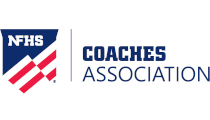The ball sails high in the air. Both players move toward it, calling “Mine, Mine, Mine.” At the last moment, they both back away, thinking the other one has it and “plop” the ball lands harmlessly on the ground and the runner is safe at first.
Sometimes that is a best-case scenario. How many times have the players involved kept going and run into each other, causing not only the ball to fall to the ground, but also for the players involved to get hurt? Some coaches spend hours reviewing different situations regarding who has the primary responsibility to make the catch if the ball is in different places on the field. There has to be a better way!
Try the numbering system. First, it resolves your problem. Second, it passes the KISS rule of coaching (Keep it simple, stupid). Finally, it teaches the players some fundamental baseball/softball knowledge they really should know. Give it a shot.
Here is how it works. First, every position on the field is known by a position number. The only change is that center and right field switch. The numbers for each position are thus:
Pitcher -1
Catcher – 2
1st Base – 3
2nd Base – 4
3rd Base – 5
Shortstop – 6
Left Field – 7
Center Field – 9
Right Field – 8
Now, put it into effect. There are only two rules to remember. One, when there is a ball hit in the air that you can catch, call your number. Two, if you hear someone else yelling a number that is higher than your number, get out of the way. This really just translates into fundamentals that cover 99 percent of the balls hit in the air.
The shortstop has the highest number in the infield, so he/she gets priority in making catches. The same is true with the centerfielder among the outfielders. Outfielders overrule infielders, and the pitcher only makes a catch as a last resort. There will be a play or two when there is a pop-up hit right to the third baseman and the shortstop calls and takes it, but the bottom line is that the play is made and nobody got hurt. As your players get more comfortable with this system, they will learn to let the other players make the catches that are right to them anyway.
This system takes about 10 minutes to implement and will reduce that uncertainty that always surrounds pop-ups. You can then use your players’ knowledge of their numbers in other areas, too. For example “26” or “24” can be used to tell your defense who covers second on a steal. Best of all, you remove “Mine, mine, mine, plop” from the diamond!
Dan Meserve
Dan Meserve is a teacher, softball coach and athletic director at Hopkinton High School in Contoocook, New Hampshire. He is a member of the NFHS Coaches Publications Committee.
Most Recent Articles
- nfhs news NFHS Learning Center Delivers 25 Millionth Course
- Track & Field/Cross Country article Effective Communication with Athletes and Coaches
- nfhs news Player Equipment Changes Highlight 2025 High School Football Rules Revisions
- Player Equipment Changes Highlight 2025 High School Football Rules Revisions
- nfhs news Judgment Call on Second Contact Eliminated in High School Volleyball






